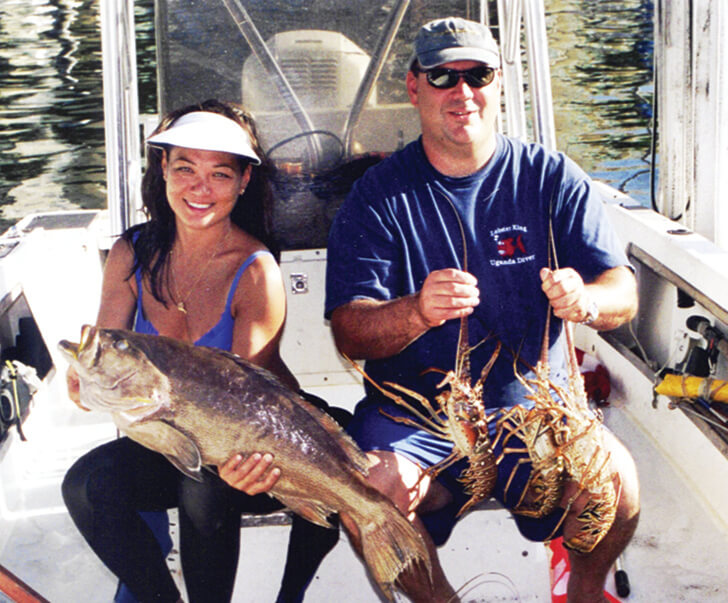There are a few good things about the fall season besides cooler weather; one of them is the beginning of lobster season! I dove with a commercial lobsterman for a few years, and he was like a kid waiting for Santa. Teaming up with someone that knew where the good spots were gave me the opportunity to spear some nice fish, but it also gave me the opportunity to learn some tricks of the trade by watching a master lobsterman at work.
First and foremost, you must learn how to find lobsters. Fortunately, the same territory that tends to hold fish life is also good for lobstering. That is because life attracts life. When I was scuba diving beside him and would see him approach an area of the reef holding a school of fish fry, I knew his senses were on high alert, and I’d start looking for fish. Invariably, while he picked up a lobster or two, I would see a desirable fish.
Over the years, we honed the most efficient method for hunting as a buddy team. He focused on lobsters while I did all the spearfishing. He would tow the flag, which meant I could be faster and more streamlined in the water while going after fish. We drifted with the current, parallel to the reef, side-by-side. If he missed seeing a lobster, which was extremely rare, I would bang my tank to alert him, and he would do the same with fish. Over the years, we became the best of friends and a formidable hunting team.

Lobster fun facts:
- Lobsters reach sexual maturity in two to three years when the carapace is a little longer than 3 inches. Florida law requires a carapace to be longer than 3 inches, thus allowing lobsters a chance to reproduce before harvesting. Along with a closed mating season, this should keep the lobster population stable.
- Mating season begins in the spring. Lobsters can be observed walking out of their holes in search of a mate, and males can be seen sparring for a lady’s affection. Mating season ends around August, though egg-bearing females can be seen year-round.
- Males have proportionately larger legs and carapace, and females have a larger tail and extra pinchers on the abdomen to hold the eggs.
Lobster tips from the master:
- Let some air out of your BC, get your buoyancy under control, and plant your knees in the sand in front of the lobster. Your butt should not be up in the air!
- Take your time and do not spook them. He said, “Lobsters are like cattle, you can herd them wherever you want, as long as you take your time.”
- The most common methods are the net and tickle stick or looper, but there are some interesting variations on the market now. Become good at all of them, as some tools are better than others in certain situations.
- When using a tickle stick, use aluminum instead of plastic. Lobsters do not respond as well to plastic.
- Be careful not to touch the antennas. Tap or nudge a lobster from behind to move it into position and put the net over it. Measure the carapace, check for eggs (by the way, extra skittish lobsters often have eggs), then place in your catch bag, and enjoy your dinner!
Fall is in the air. Happy hunting!
Sheri is a world-record holder, host of Speargun Hunter, and producer of The Blue Wild Ocean Adventure Expo in Ft. Lauderdale, Florida. Follow “Sheri Daye” and “The Blue Wild” on Facebook and Instagram.